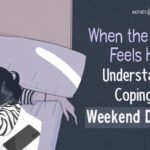- Recent research shows a rise in smoking among young adults.
- Experts have also explored the negative link between smoking and mental health.
Is Smoking On The Rise Among Young Adults?
A recent study revealed that cigarette sales have increased amongst youth populations across the world. It is found that cigarette smoking is prevalent amongst:
- 2% of youth in grades six to nine
- 11% at 15 to 19 years of age
- 18% at 20 to 24 years of age
- 19% at 25 to 34 years of age
The Appeal Of Cigarette Smoking
Studies show that while rates of alcohol consumption have gone down amongst the youth, other substance abuse involving tobacco, cannabis, etc. has seen an upward surge since the 1990s. Despite repeated warnings and raising awareness about the side effects of tobacco consumption, youth’s fascination with smoking continues.
The appeal of cigarette smoking is further aggravated and made “cool” and “fashionable” by pop, hip-hop, bohemian, and fan cultural references.
Smoking Cigarettes As A Coping Mechanism
As with any substance use, experts link cigarette smoking to underlying mental health issues. They opine that smoking, for the youth populace, serves as an escapade from everyday stress and anxiety.
Because of limited or unaffordable mental healthcare treatment options, ‘smoking away one’s troubles’ appears as a feasible mechanism to cope with growing demands on the youth’s social roles, duties, and performances. However, this coping mechanism in turn doubles the risk of developing depression or schizophrenia compared with those who didn’t, creating a vicious cycle.
Moreover, prejudice against mental health medications like antidepressants and anti-anxiety drugs makes smoking appear as the ‘healthier’ coping option. Lauren Debiac, an American addictions therapist, further elaborated: “Another factor is that many young people don’t quite understand the dangers involved in cigarette smoking. There have been fewer messages aimed at young adults in recent years that speak to the dangers of cigarette smoking.”
Therefore, the youth (especially those belonging to the BIPOC and LGBTQ+ communities) turn a blind eye to the hazards of smoking and vaping, including:
- Cancer
- Coronary diseases
- Cardiovascular diseases
- Developmental delay
- Sleep disorders
- Eating disorders
- Poor mental health by increasing the risks of mental disorders like schizophrenia, depression, anxiety disorders, etc.
Combating The Rise In Smoking In The Younger Populace
In order to combat the smoking surge in young people, experts have considered measures like:
- Communicating to the youth about the dangers of smoking and vaping
- Spreading awareness about mental health issues among the youth
- Arranging for school- and community-level affordable mental healthcare
- Encouraging active parental supervision of substance use
- Taking an active stance against teen smoking
- Advocating local and school-sponsored smoking prevention campaigns
- Supporting efforts to make public places smoke-free
- Increasing taxes on tobacco products
With empathy and active participation, we can come together and help the younger populace successfully battle their mental health issues and substance abuse and live happier, more fulfilling lives.
Know More About –
Related Articles –
- Stop Smoking During Pregnancy
- 4 Harmful Impacts Of Substance Abuse On Adolescent Mental Health
- The 5 Stages Of Sleep Deprivation (And Tips To Improve Sleep Quality)







